Political ‘Brand’ Colours
How does brand colour affect how your business is perceived? This article sheds some light on the topic by looking at the brand colours of our political parties.
Conservative blue
Blue is a safe colour to use in branding, particularly darker shades of blue. On the positive side blue suggests trust, honesty and reliability but it can also reflect a reluctance for change. In the past blue has been a favourite brand colour for financial institutions wanting to promote an image of safety and responsibility but this has changed in recent years as high street banks try to distinguish their similar offer by using branding.
Politically blue represents right-wing conservative views – safe, traditional and responsible. This association was established when the UK Conservative Party used blue in the 19th Century. The National Party and newly formed Conservative Party both follow this tradition with brands that use blue as their main colour.
Socialist red
Red is a vibrant colour that represents passion, creativity and action - but it also represents anger. In business red can evoke a passionate response from customers that can be negative as well as positive. Red is attention grabbing and is one of the most powerful colours to use in branding but the emotional response to red means it is a colour that needs to be considered before committing to.
In politics red represents left-wing socialist and communist views. This dates back to the French revolution when red flags were flown by revolutionaries. The Labour Party follows the tradition and uses red as their brand colour. The Maori Party features red in their branding which is accompanied by black to reflect their cultural roots. Mana also uses red which fits with their cultural and left-wing positioning.
Environmental green
Green has a strong association with the environment and is the colour of balance and harmony. While its positive attributes are growth and righteousness it is a colour that is also associated with being over cautious and judgmental. Green is the obvious choice for companies who want to be seen as environmentally aware and has been strong competition for blue amongst financial institutions because of its association with money and prosperity.
Only one political party uses green with the colour being a key aspect of the branding for the Green Party because of its environmental standpoint.
Liberal yellow
Yellow is an uplifting colour that represents intellectualism and creative thinking. While it is an optimistic and confident colour it is also associated with impatience, cowardice and a lack of compassion. In branding yellow is a strong colour that works well as a secondary colour for highlight and support. Be aware that yellow can be seen as cheap, particularly when used in large quantities.
Yellow represents liberalism in politics and as a right-wing liberal party Act have adopted yellow which is supported with blue to reflect their political positioning.
Non partisan purple
Purple is a colour associated with spirituality and imagination. It is also linked to nobility and wealth because in the past the high cost to produce purple dye made purple clothing only affordable for the rich. Purple is a future looking colour popular with younger audiences but it is also linked to immaturity and the impractical. Purple is under-used in branding but is beginning to gain more prominence in recent years. It is a good secondary brand colour as it mixes well with many colours across the colour spectrum.
Purple has no political affiliations - in the world of politics it is neutral. This makes it a good colour for centralist parties or those who have policies that don’t fit into what is usually expected. United Future and the Internet Party both use purple for their branding.
Unpopular orange
Orange is adventurous, sociable and optimistic but, like yellow, can be seen a cheap when used in large quantities. It shares a lot of similarities with yellow and also red (both sit either side of it on the colour spectrum) and meanings associated with these colours can be leveraged depending on how much red or yellow are used to make orange. In branding it is another colour that is under-used but is becoming more popular with younger generations.
In New Zealand we have no political parties that use orange in their branding.
Anarchist black
Mystery, sophistication and confidence are associated with the colour black. Negativity, intimidation and control are less desirable qualities that are also associated with this colour. The meanings associated by black make it easy to decide if black is right for a business or not. For consumer brands black can be particularly strong for products that want to be perceived as sophisticated and luxurious.
In politics black is linked to anarchism and to the far-right. New Zealand First uses black as a brand colour and the Maori Party also use it alongside red.
How do you perceive colour?
Most of our political parties operate close to centre and if their policies were going to reflect their brand colour they would all be shades of purple, some more red, others more blue. We could make an exception for the Green Party as they should be brown after combining their environmental and left-wing policies (green and red making brown).
While reading this article you may have found yourself reflecting on the positive and negative associations of colour for the parties you support or oppose. For all of us our political viewpoints will influence how we perceive colours on this subject.
Colour is subjective but it is also loaded with meaning. In branding it is a very powerful tool that works at a subliminal level. It is something that shouldn’t be overlooked when considering how you want your business to be perceived by your target audience.
Posted 28 July 2014
Previous Next